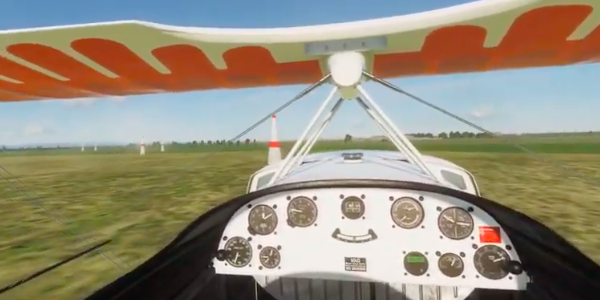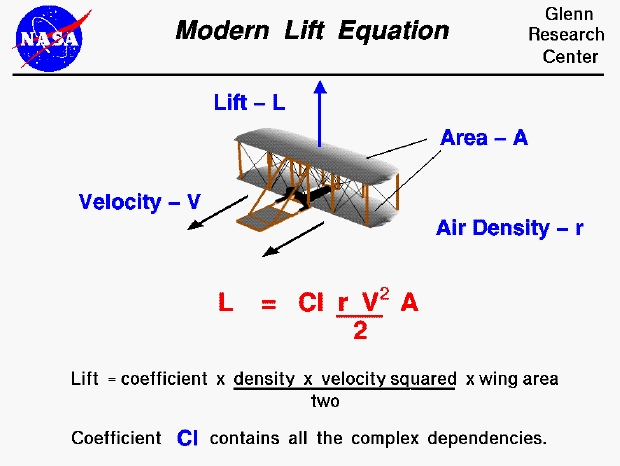Prior to this blog I released a video about Commercial Maneuvers and in it I used some flight sim software for the demonstration. I used techniques that are common in the real airplane to maintain fidelity. However I did take one, teeny-tiny liberty, that I rarely use in the real airplane… the placarded Maneuvering Speed.
For those who may not be familiar with Maneuvering Speed (Va), Rod Machado states “The design maneuvering speed (Va) is the speed at which the airplane will stall before exceeding its design limit-load factor in turbulent conditions or when the flight controls are suddenly and fully deflected in flight.” Whenever I write this on the white board though, I usually turn around to a bit of a blank stare. Let me explain… no, there is too much… let me sum up, “Maneuvering Speed is the speed at which the airplane will Stall before it Breaks.” This is an example of where Stall can be a good thing. When the wing stalls, the airflow is separated and there’s no longer any loading (stress) on that surface, and it’s very hard to break something that isn’t stressed.
A Normal Category airplane has a positive G structural Load Limit of 3.8 G’s. Meaning if you are at Va and give a full nose up elevator deflection, the aircraft will load 3.8 G and then enter an accelerated stall, unloading back to 1 G. If you are less than Va, the aircraft will stall at an even lower load factor. This is good news, anything less than 3.8 G means no over-stress (most of the time, more on this later). But if the same elevator input is made at a speed above Va, the aircraft will have the energy to generate more than 3.8 G of loading which would result in structural deformation and possibly structural failure.
“Ok so what you’re saying is follow the placard?” Not quite… the placarded speeds are based on Max Gross Weight and Full Forward CG. Even if you managed to load the airplane and takeoff at max gross weight, by the time you arrived at altitude in the practice area, you’d be down on weight from all the fuel that was burned. In the video I made, I flew it right at the placarded speeds, but let’s see what it takes to figure out what the maneuvering speed should be. Don’t be afraid but, MATH AHEAD!
All pilots should be familiar with the Lift Equation:
Lift counteracts weight, and the weight the airplane feels is expressed in Load Factor or G-Force. Density and Wing Area are not under the pilots control, but Coefficient of Lift (Angle of Attack) combined with Calibrated Airspeed dictate G felt, and G available. The faster you’re going, the more G you have at your disposal. But an airplane is just a construction of steel, and aluminum (or carbon fiber) with limitations that must not be exceeded for safety of flight.
If you’ve read the POH for the Cessna 172S you may have noticed that in Section 2 Limitations there are multiple speeds listed for Maneuvering Speed based on weight of the aircraft. You may also have noticed that the speeds drop as weight goes down. When the aircraft gets lighter, it takes less speed for the wing to create load factor, and the wing has an ultimate load capability of (Max Gross Weight x Load Factor Limit). In the 172S that’s 2550 x 3.8 = 9690 lbs. That 9690 lbs is what the wing is designed to carry, if the airplane weight was 2200 pounds, it would take 4.4 G to reach that wing loading, and this also corresponds to the Utility Category Load Factor Limit. Even lower weight would allow for higher G to reach the load limit, but can your radio brackets take that extra G? Seat rail? What about your engine mounts? Best not to push it.
Assuming that exceeding the maximum G for the airplane could result in damage, then Maneuvering Speed is the insurance policy against that damage. When the aircraft is below Va, there isn’t enough energy to create more G than the structure can withstand. After the wing exceeds the critical angle of attack and the stall begins, load factor on the airplane returns to 1 G in the stalled state. It’s very hard to break something designed for nearly 4 G if it’s only subjected to 1 G.
Have I scared you away with the math yet? Here comes just a bit more. There’s an easy way and an easier way to calculate your Va based on weight. Generally, Va goes down approximately 2 knots for every 100 pounds below max gross weight for airplanes less than 10,000 pounds. For example, you weigh 2200 pounds with a 2400 max gross weight and a Va of 99 knots, becomes a Va of 95 knots at that new 2200 pound weight. With lower weight, the wings needs less AoA and less energy to support the weight of the airplane. But think about a weight lifter being tricked into picking up a large heavy looking, but empty and light box. If they use all their strength, they’ll accidentally throw the box across the room (maybe damaging the box). If our airplane is lighter in weight but traveling at the same speed and a rapid elevator input is made, the wing will generate more lift very easily that would lead to an overstress, not necesarrily of the wing, but what about our other compnoents?
The engine mounts, seat rails, radio mounts and various other components also have Load Factor limits. They’re supporting objects whose weight DOESN’T change as we fly along burning fuel. The engine always weighs what it weighs and our motor mounts have to support that weight throughout maneuvering flight regardless of speed or AoA. If the load factor on the airplane go above the limits on those parts we’re risking structural failure of a component, not necessarily the wing. For example… it’s possible to get a Cessna 172 with a single pilot on board to weigh as little as 1900 pounds. If we manage to pull 5 G’s on the airplane, the wing is only doing 9500 pounds of work. This is just below the 9,690 pounds we calculated the wing was capable of supporting earlier in this article, so the wing is fine. But what if our engine mounts were only rated to 4.4 G’s, or radios, or seat rails?
A Lycoming IO-360 typically weighs 320 pounds. Multiply 320# x 4.4 G = 1408 pounds being supported. At 5 G’s those mounts now need to hold 1600 pounds. That’s almost a max gross Cessna 152! And if a gust is encountered that’sa sudden uncontrolled spike in load factor! So the wing isn’t being stressed, but our engine mounts have now been overstressed. There’s a very drastic weight and balance issue should that engine come off the front of our airplane. I use the engine as an example because the math is simple, but the real engine mounts are typically rated at +6/-3 for non-aerobatic airplanes. There’s also a safety factor of 50% built into all of these numbers from the manufacturer, but use of that 50% extra will only result in deformation of the material, the repeated abuse of which will cause structural failure. Think of bending a paperclip back and forth multiple times, you’ll never get it back to the original shape, and repeated deformation will cause it to snap.
For the majority of the training I received when earning my certificates, Va was talked about in relation to the elevator and G-force alone. But Va also applies to deflections not only of the Elevator, but the Rudder and Ailerons as well. Deflections of multiple control surfaces at the same time reduces load factor limits on the aircraft by 1/3. Asymmetrical Loading causes forces to be applied to structures that weren’t meant to support those forces. Rolling and Pitching causes the load factor to be applied to the rear spar of the wing, which is much smaller and not designed to take the same forces leading to failure well before published limit load factors. There has been a rash of fighter aircraft over the decades with failed or cracked wings due to asymmetrical rolling G. Yawing and Pitching creates incredible loads on the tail and empennage of the aircraft. Protect your aircraft and the others who fly it, because it may not fail on the overstress flight, but on someone who wasn’t a party to the overstress.
The last little thing to think about with Maneuvering Speed: Va protects the aircraft for motions about 1 axis, in 1 direction, 1 time. By 1 axis I mean 1 at a time, pitch (lateral) and pitch only, or yaw (vertical) and yaw only, or roll (perpendicular) and roll only. If maneuvering using full scale deflections below Va, make them on 1 axis and then neutralize before applying another control surface deflection. By 1 direction 1 time I mean don’t go stomping rudder pedals left and right, or slapping full scale ailerons left and right. If you make a large scale deflection, center the control briefly before reversing the direction. Allow those opposing forces to neutralize.
When flying in turbulence, or if you need full or abrupt movement of the elevator control for some reason, flight at or below VA ensures the airplane will stall before bending or breaking up in flight. VA acts as a relief valve to prevent structural damage. Now hopefully you know a little more about Maneuvering Speed and the purpose it serves, more than just a “that’s what speed I fly my Steep Turns at”.


